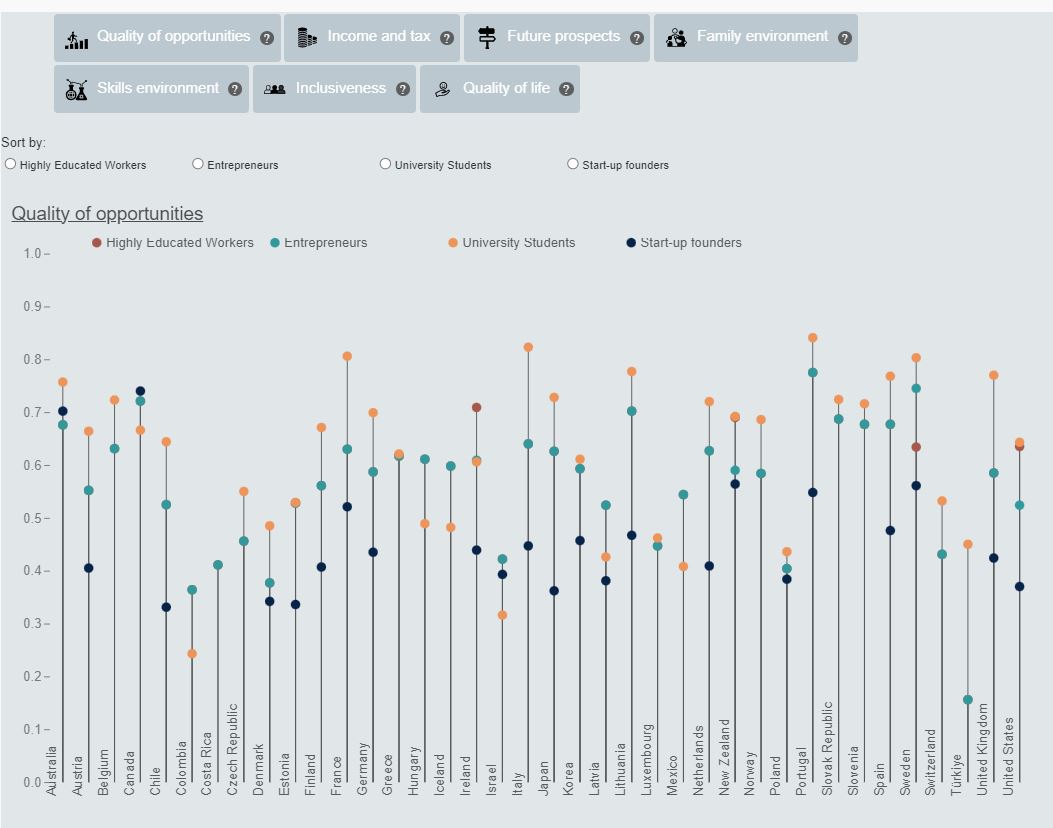OECD updated its Indicators of Talent Attractiveness
The 2023 edition of ITA includes 4 categories of talented migrants: highly educated workers, foreign entrepreneurs, university students and start-up founders
"Talented and skilled individuals have a key role to play in countries’ future prosperity. They hold jobs that are key for innovation and technological progress and ultimately contribute to stronger economic growth with other employment opportunities and better living conditions for all. OECD countries increasingly compete to attract and retain talented workers notably by adopting more favourable migration policies for the best and the brightest. This competition has led to a convergence of policy frameworks but significant differences in policies and practices remain. Beyond conditions for migration, many other factors contribute to shape countries’ attractiveness for foreign talents.
The OECD Indicators of Talent Attractiveness (ITA) is the first comprehensive tool to capture the strengths and weaknesses of OECD countries regarding their capacity to attract and retain different types of talented migrants. The 2023 edition of ITA includes 4 categories of talented migrants: highly educated workers, foreign entrepreneurs, university students and start-up founders, as well as an expanded range of dimensions for assessing a country’s attractiveness."
The OECD Indicators of Talent Attractiveness score 7 dimensions: quality of opportunities; income and tax; future prospects; family environment; skills environment; inclusiveness; and quality of life. The indicators also take into account how difficult it is for prospective migrants with required skills to obtain a visa or residence permit.
To know more, check the OECD Indicators of Talent Attractiveness (ITA) website.

Infographic from OECD website


